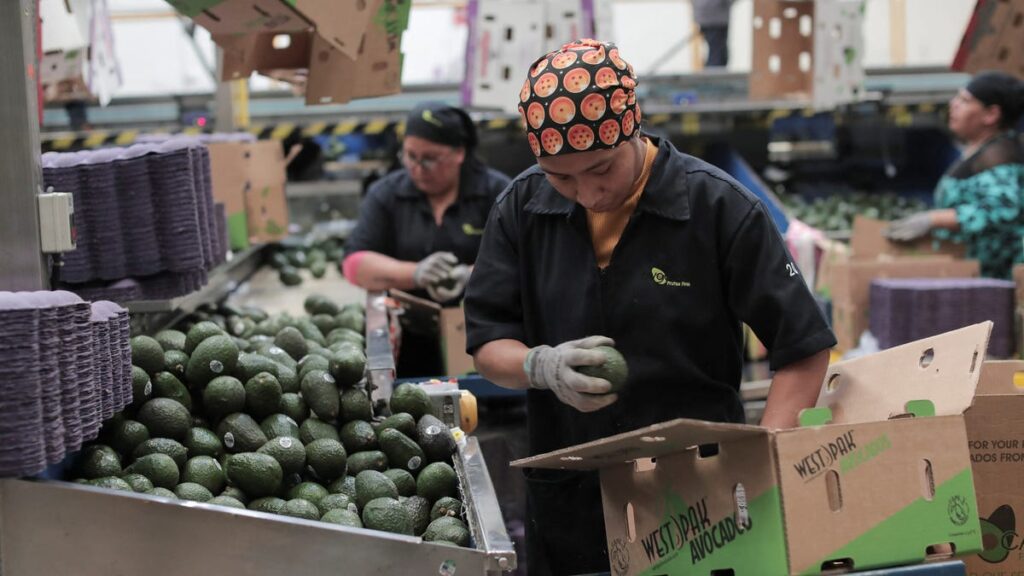The other top countries the US imports avocados from — Peru, Dominican Republic, Colombia and Chile — will face a 10% tariff, according to the White House.
President Trump says ‘every country’ wants to negotiate on tariffs
President Donald Trump said “every country” has called him to negotiate after his tariff announcement.
Although the Trump administration imposed tariffs against the majority of the world on “Liberation Day,” Mexico and the U.S. will continue to keep some free trade agreements in place.
Mexico and Canada were the targets of early tariff orders, only to face delays and exemptions that President Donald Trump prolonged, as other trade partners like China, Indonesia, and Vietnam would face tariff rates of up to 54%.
U.S. stocks opened down Friday morning after China announced retaliatory tariffs overnight, continuing a tumble beginning after Wednesday’s announcement. JP Morgan now calculates a 60% chance for a recession this year.
Meanwhile, some Mexican goods will still be imported tariff-free. Reuters reported that some exemptions, like textiles, could give Mexico a competitive edge against other nations expected to face steep reciprocal tariffs.
Other exemptions are likely to excite foodies.
Avocados from Mexico are exempt from tariffs
For those who love avocado toast, chips and guac, or the ultimate Chipotle upcharge, avocados may be less impacted than other imports.
Avocados are one of the Mexican items that the U.S. will continue to be able to import tariff-free, Reuters reported. Of the fresh avocados the U.S. imports, 87.6% come from Mexico, according to U.S. Department of Agriculture data as of Jan. 7.
The other top countries the U.S. imports avocados from — Peru, Dominican Republic, Colombia and Chile — will face a 10% tariff, according to the White House charts posted Wednesday on X.
What are tariffs, and why are markets spooked?
Trump had previously ordered a 25% tariff against Mexican and Canadian imports, delayed it for a month, and then carved out an exemption for goods covered by the United States-Mexico-Canada Agreement.
Trump initially said he was using tariffs to get help from China, Canada and Mexico to curb the flow of migrants and illegal drugs into the U.S. The president has insisted that the countries have not done enough to help address what he sees as core issues for his administration.
But on “Liberation Day,” Trump said the 10% universal tariff and additional “reciprocal” tariffs on select other nations are intended to boost domestic production and target countries that contribute most to the trade deficit.
“For years, hard working American citizens were forced to sit on the sidelines as other nations got rich and powerful, much of it at our expense,” Trump said. “But now it’s our turn to prosper.”
A tariff is a form of tax imposed on imports from another country. Economists generally agree that trade barriers between countries raise consumer prices and negatively impact economic output and income, according to the Tax Foundation, a nonpartisan tax policy nonprofit.
Tariffs can create more demand for domestic manufacturers, but those companies are also part of the global supply chain and therefore also face higher prices set by tariffs, experts told USA TODAY.
Contributing: USA TODAY’s Joey Garrison, Medora Lee; Reuters
Kinsey Crowley is a trending news reporter at USA TODAY. Reach her at kcrowley@gannett.com. Follow her on X and TikTok @kinseycrowley or Bluesky at @kinseycrowley.bsky.social.
